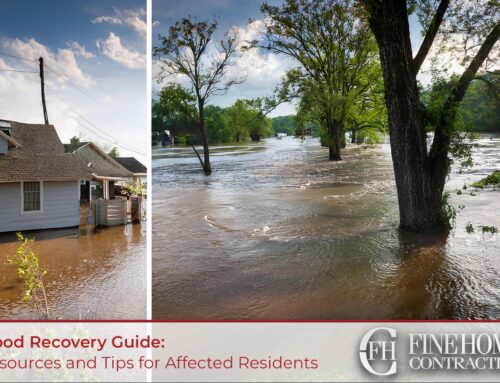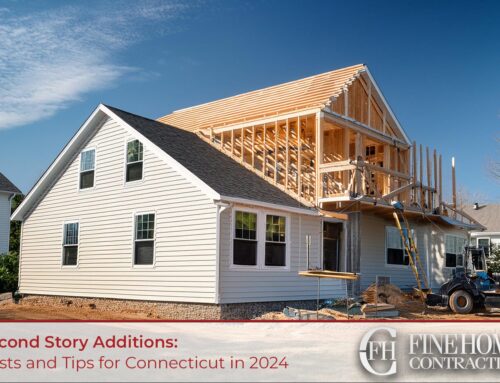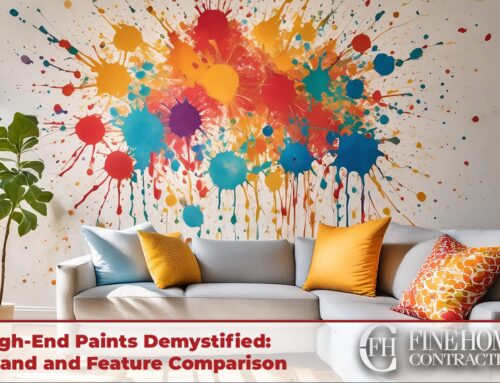If you or a loved one is dealing with a chemical sensitivity, cystic fibrosis, or respiratory issues, you know that the quality of air in a space can heavily impact not only your comfort, but your health and functionality. What you might not know is that there are building techniques and materials that can be used when building or remodeling that minimize discomfort and health concerns throughout the house. An experienced contractor familiar with the particular needs of those with chemical sensitivities can design your remodel from the ground up to use materials less likely to offgas chemicals, leave odors and particulate matter throughout the home, and overall can make your home a safer, more comfortable place to live out your life.
When remodeling for chemical sensitivities, it’s important to avoid materials that off-gas VOCs and other chemicals. Look for low-VOC or zero-VOC options when choosing adhesives, insulation, flooring, paints, and more. Prioritize natural materials like wool, cotton, wood, bamboo, and linoleum which have lower off-gassing potential. In this blog post, we’ll run through our most common recommendations to keep in mind whether you’re remodeling for a client with chemical sensitivities or looking to make your own home a safer space.
What are VOCs?
Volatile organic compounds (VOCs) are emitted as gases from certain solids or liquids. VOCs include a variety of chemicals, some of which may have short- and long-term adverse health effects.
Prioritize Formaldehyde-Free Options
Formaldehyde is a common indoor air pollutant found in some building materials and furniture. When remodeling, opt for formaldehyde-free insulation, plywood, cabinets, and furniture to improve air quality.

One option for low chemical emission products is looking for “Greenguard certified” products meet strict standards for low VOC emissions.
Other options for low emission products include kitchen cabinets from Kerf, which are made of formaldehyde-free plywood, with zero-VOC finishes.
For a list of chemical free finishes and paints, we recommend these lists from My Chemical Free House:
Improve Ventilation and Air Flow
Proper ventilation is key to reducing indoor pollutants. Consider installing HRV/ERV ventilation systems to continually filter and refresh indoor air. Strategically place bathroom and kitchen fans to vent contaminants outside. While many will open their windows regularly for fresh air circulation, it’s important to consider that cooler areas in your home may develop condensation or moisture from humid outdoor air, which can lead to mold and other issues that can impact your respiratory health and comfort.
Control Moisture and Humidity
Excess moisture enables mold growth which can aggravate sensitivities. Manage humidity levels with dehumidifiers and by sealing leaks. Vent bathrooms, kitchen and laundry properly. Choose mold resistant building materials.
For showers in particular, we recommend looking at waterproofing systems such as Schluter’s Shower System, which further minimize the risk of water damage and moisture issues throughout your space. Well-constructed showers and wet rooms will be designed from the ground up with sufficient drainage and ventilation, so it may be worth considering a full bathroom remodel if improving the air quality in your bathroom proves to be particularly difficult.
Managing moisture in basements is also particularly important, as cooler underground spaces tend to gather moisture and condensation. The use of dehumidifiers and air purifiers can greatly improve this, but if your basement remains considerably musty, it may be worth looking at a basement remodel focused on waterproofing and creating a firmer moisture barrier around the space.
Use Alternative Building Methods
Traditional building materials like drywall often contain VOCs. Consider alternative methods like magnesium oxide boards, earthen or clay walls, solid wood paneling and straw bale insulation which offer natural breathability.
Wall finishings are particularly known for offgassing and VOCs, and thankfully there is a variety of alternative, low-emission materials that can replace drywall such as National Gypsum’s non-toxic Goldbond Drywall, earthen or clay walls like American Clay’s non-toxic plasters, or other gypsum based options like those from Georgia-Pacific.
Choose Low-VOC Paints and Finishes
Standard paints and finishes release high levels of VOCs. Look for low-VOC, eco-friendly options like milk paint, clay paints, plant-based finishes and natural oils which have safer fume profiles. Let paint fully cure before occupying spaces.
Here are some recommendations for low-VOC and VOC-free paint brands:
- AFM Safecoat – Offering zero-VOC acrylic paints, stains, and finishes. Made in the USA.
- Graphenstone – Their lime-based paint contains no VOCs, formaldehyde, or harsh chemicals.
- ECOS Paints – Low-VOC latex paints with organic ingredients and recycled content.
Install Air Purifiers and Filters
Utilizing HEPA and activated carbon air purifiers can help capture allergens, chemicals and particulates. Place units in main living areas and bedrooms. Upgrade HVAC filters to MERV-13 for better air cleaning.
Seal Floors Instead of Using Carpet
Utilizing HEPA and activated carbon air purifiers can help capture allergens, chemicals and particulates. Place units in main living areas and bedrooms. Upgrade HVAC filters to MERV-13 for better air cleaning. Carpets trap allergens and fumes. For cleaner indoor air, opt for sealed flooring like hardwood, tile or linoleum which can be easily swept and mopped. Area rugs can help add comfort and warmth, and are available made from low-emission materials that require lower maintenance.
Plan Ahead for Flexibility
When remodeling, consider how spaces could be adapted in the future should sensitivities change. Building in flexibility for air purifiers, ventilation improvements and non-toxic upgrades can help.







